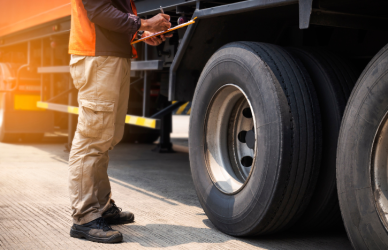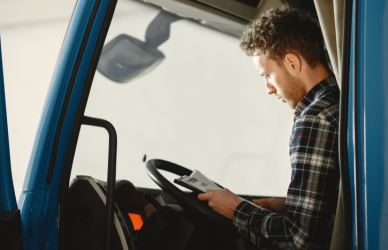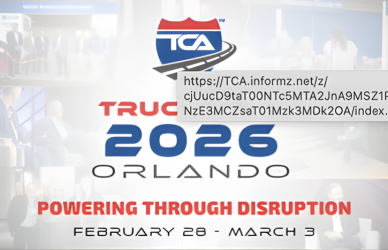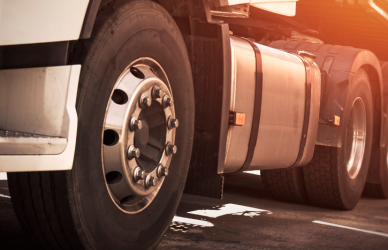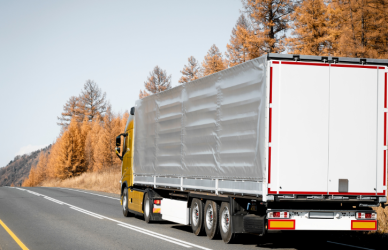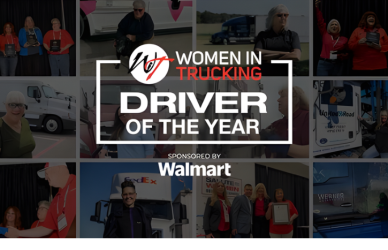Don’t use the wrong tool for the job. Just like you wouldn’t rely on a Phillips-head screwdriver to spread concrete, autonomous vehicles can’t solve every transportation challenge. This insight comes from Walter Grigg, the industry relations leader at Torc Robotics.
“What we see is we’re building a tool for the industry. No tool in a carpenter’s tool belt does everything,” he said. “We’re building what is effectively a Phillips-head screwdriver. It has a very specific application it is designed to do very well … A tool has a place and a constraint in what it does, but it does that job very well when applied correctly.”
The Trimble Insight 2023 Tech Conference and Expo in Las Vegas highlighted the role of autonomous trucking in the industry. While autonomous vehicles have their place, they are not a one-size-fits-all solution.
According to Michael Wiesinger, VP of Commercialization at Kodiak, the use case determines the viability of autonomous trucking. In the case of private fleets, some shippers and platform providers may acquire AV trucks, potentially taking market share from carriers. Kodiak intends to focus on its core competencies, however, and not directly compete with carriers. The company specializes in developing AV technology solutions for trucking companies, leaving the trucking business to them.
“What you have to do is really look at the specific network and say, ‘Do autonomous trucks make sense for you or not? What are the benefits from a safety, from a utilization, and so on perspective, that you can actually generate?’” Wiesinger said. “It’s really depending on the use case and how you want to operate your network in the future.”
Covenant Transport recognizes the value of incorporating autonomous trucks into its fleet of 850 expedited trucks. Despite not being an early adopter of innovative technology due to its size, the company has decided to embrace AVs as a means to enhance its operations.
Matt McLelland, the vice president of sustainability and innovation at Covenant, maintains a balanced and optimistic perspective on AVs. While he acknowledges their potential, he does not foresee the technology replacing human drivers in the near future.
With a fluid and cautious approach, Covenant is positioning itself ahead of the curve, leveraging AVs to further develop and strengthen its fleet of expedited trucks.
“We don’t see AV replacing any of our drivers. We say augmenting the fleet,” McLelland said. “Maybe at some point, after we’re all pushing up daisies, that’ll be the case, but what we tell our drivers right now is that if you take a job with us as a 21-year-old driver, you can retire with us at that point in the future.”
The initial perception of AVs in the transportation industry was that they would primarily benefit carriers by reducing the need for drivers and saving costs on recruiting and retention. However, it turns out that there are numerous scenarios where a driver is still required, such as handling breakdowns and refueling, as well as conducting pre- and post-trip inspections.
“There are all these other jobs that seem to be spinning up that the driver used to do, so we haven’t gotten to the point yet with our partners (about) the cost per mile and how the economics of that are going to shake out,” McLelland said. “But there are a lot more people involved than used to be since that driver was that one person that was able to do everything. So the driver out, for us, looking at the timelines that have been shared publicly, it’s still a little ways out, so we’re not spending a lot of time trying to figure that out today … There are still a lot of unknowns for us,” he added.
Covenant is currently exploring potential lanes and timeline for autonomous trucking. Next year, they will start analyzing the unit economics of this technology by organizing the data into a spreadsheet.
While Covenant doesn’t anticipate fully replacing drivers with autonomous technology, Wiesinger believes it will happen eventually. Kodiak currently operates trucks with a safety driver, but Wiesinger envisions a future without any human driver on board. The initial preparation and inspections would still be done by humans, but the actual driving would be automated.
In order to reach this vision, Kodiak is building a strong safety case that proves their autonomous system is safer than human truck drivers.
The safety proposition is the aspect that excites Covenant the most about this technology.
“Accidents are things that are really at the top of the list of things that keep us up at night,” he said. “And we think that (AV truck) is going to make a better decision than the driver – at least as good of one.”
Source: CCJ Digital



